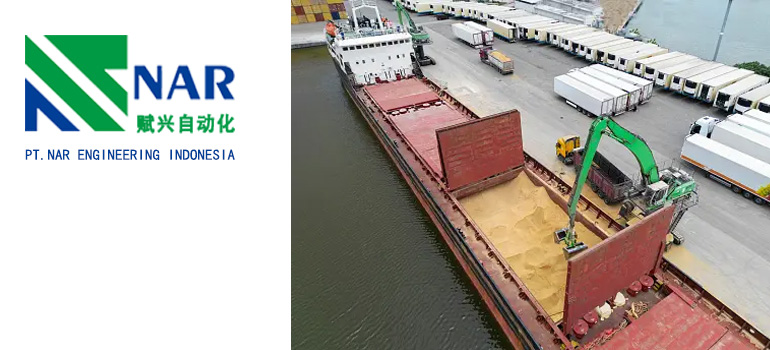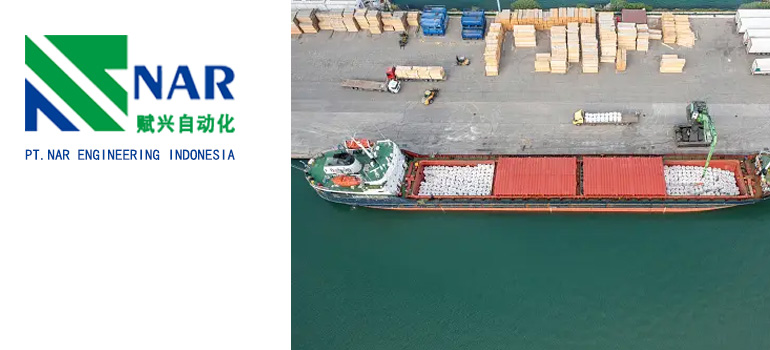Summary:
Maximizing Maritime Efficiency: The Role of Mobile Ship Loaders in Modern Ports
Evolution of Port Equipment
Advantages of Mobile Ship Loaders
Impact on Modern Ports
Evolution of Port Equipment
The evolution of port equipment stands as a testament to the relentless pursuit of efficiency, safety, and sustainability in maritime operations. From rudimentary manual labor to the sophisticated machinery of today, the journey of port equipment reflects the ever-changing needs of global trade and the advancements in engineering and technology.
Pioneering Days: Manual Labor and Basic Machinery
In the early days of port operations, the loading and unloading of cargo were predominantly manual endeavors, relying on the sheer strength and skill of dockworkers. Wooden cranes and winches were among the first mechanical aids introduced, offering a modest increase in efficiency but still heavily reliant on human labor.
While these early innovations represented a significant leap forward in port technology, they were limited in their capacity and often prone to inefficiencies and safety hazards.
Industrial Revolution: Steam Power and Mechanization
The advent of the Industrial Revolution brought about a seismic shift in port equipment, ushering in an era of steam-powered machinery and mechanized handling systems. Steam cranes and conveyor belts revolutionized cargo handling, enabling ports to accommodate larger vessels and higher volumes of freight.
With the introduction of electric motors and hydraulic systems, port equipment became more powerful, reliable, and versatile, further enhancing the efficiency and safety of maritime operations.
Modern Era: Automation and Robotics
In the modern era, port equipment has undergone a transformative evolution driven by automation, digitization, and robotics.
Automated container terminals equipped with gantry cranes, automated guided vehicles (AGVs), and robotic arms have revolutionized container handling, drastically reducing turnaround times and labor costs while improving safety and accuracy. Similarly, the emergence of mobile ship loaders represents the latest frontier in port technology, combining mobility, versatility, and advanced automation to optimize loading operations and enhance port efficiency.
Future Horizons: Sustainable and Smart Solutions
Looking ahead, the future of port equipment is poised to embrace sustainable and smart solutions aimed at reducing environmental impact and maximizing operational efficiency. From eco-friendly propulsion systems for vessels to intelligent port infrastructure powered by IoT sensors and AI algorithms, the next generation of port equipment will prioritize sustainability, resilience, and adaptability in the face of evolving global challenges.
By leveraging cutting-edge technologies and innovative design principles, ports will continue to evolve as vital nodes in the global supply chain, facilitating the seamless movement of goods while safeguarding the planet for future generations.
Advantages of Mobile Ship Loaders

Mobile ship loaders represent a paradigm shift in the realm of maritime logistics, offering a myriad of advantages that redefine the efficiency and efficacy of port operations. These versatile machines, equipped with cutting-edge technology and innovative design, bring about a host of benefits that traditional stationary loaders simply cannot match.
Flexibility and Maneuverability
Unlike their static counterparts, mobile ship loaders possess unparalleled flexibility and maneuverability, allowing them to adapt to the dynamic demands of port operations with ease. By virtue of their mobility, these loaders can navigate through congested port environments and reach vessels at varying berths, optimizing loading processes and minimizing downtime.
Whether it’s accommodating different types of vessels or adjusting to shifting cargo requirements, the agility of mobile ship loaders ensures seamless and efficient loading operations, thereby enhancing overall port productivity.
Enhanced Loading Capacity
One of the key advantages of mobile ship loaders lies in their enhanced loading capacity, which stems from their ability to reach multiple holds of a vessel without the need for repositioning. By utilizing telescopic conveyors and swiveling booms, these loaders can efficiently transfer bulk materials from shore to ship, maximizing cargo throughput and minimizing loading times.
This increased loading capacity not only translates to higher throughput for ports but also enables shipping companies to optimize vessel turnaround times, ultimately reducing operational costs and enhancing profitability.
Cost-effectiveness and Time Efficiency
In addition to their operational advantages, mobile ship loaders offer significant cost-effectiveness and time efficiency benefits. By streamlining loading processes and reducing reliance on auxiliary equipment such as shore-based conveyors and cranes, these loaders minimize labor requirements and equipment maintenance costs, resulting in substantial savings for port operators. Moreover, the ability to quickly mobilize and commence loading operations translates to shorter vessel turnaround times, allowing ships to spend less time docked at ports and more time engaged in revenue-generating activities at sea.
This not only improves the overall efficiency of maritime logistics but also enhances the competitiveness of ports in the global trade landscape.
Impact on Modern Ports
The impact of mobile ship loaders on modern ports is profound, reshaping the landscape of maritime logistics and revolutionizing the way ports operate and compete in the global economy. From optimizing efficiency to enhancing sustainability, these innovative machines exert a multifaceted influence that extends far beyond the confines of the dockyard.
Streamlining Port Logistics
Mobile ship loaders serve as catalysts for streamlining port logistics, offering unprecedented flexibility, speed, and adaptability in cargo handling operations. By eliminating the need for fixed infrastructure and enabling direct loading from shore to ship, these loaders reduce congestion at berths, minimize turnaround times, and enhance overall port throughput.
Their ability to reach multiple vessels at different berths enhances berth utilization rates, maximizing the efficiency of port operations and mitigating delays caused by vessel congestion. Moreover, the modular design and customizable features of mobile ship loaders allow ports to tailor their handling processes to meet the unique requirements of diverse cargo types and vessel configurations, further optimizing logistics workflows and enhancing supply chain resilience.
Optimizing Resource Allocation
In addition to streamlining logistics, mobile ship loaders play a pivotal role in optimizing resource allocation within modern ports. Their mobility and versatility enable ports to deploy loading capacity precisely where and when it is needed, minimizing idle time and maximizing equipment utilization rates.
By reducing the reliance on fixed infrastructure and auxiliary handling equipment, such as conveyor belts and shore cranes, these loaders enable ports to allocate resources more efficiently, freeing up valuable waterfront real estate for other revenue-generating activities. Moreover, the modular construction and rapid deployment capabilities of mobile ship loaders enhance the scalability and agility of port operations, allowing ports to respond swiftly to fluctuations in cargo demand and market dynamics.
Meeting Environmental Regulations
Furthermore, mobile ship loaders contribute to modern ports’ efforts to meet stringent environmental regulations and achieve sustainability objectives. By optimizing loading processes and minimizing energy consumption, these loaders reduce greenhouse gas emissions and environmental footprint associated with port operations.
Their ability to handle bulk materials with high precision and minimal spillage mitigates the risk of pollution and contamination in marine ecosystems, safeguarding sensitive coastal habitats and biodiversity. Additionally, the adoption of innovative technologies, such as electric propulsion systems and regenerative braking, further enhances the environmental performance of mobile ship loaders, positioning ports as leaders in sustainable maritime transportation.
By embracing eco-friendly practices and investing in green technologies, modern ports can not only comply with regulatory requirements but also enhance their reputation as responsible stewards of the environment, attracting eco-conscious customers and stakeholders and ensuring long-term viability and resilience in an increasingly environmentally conscious world.

